Vektorkollektor
Interactive Installation
Chemnitz, 2021
VEKTORKOLLEKTOR is a participative installation with which people can draw images using a joystick. It is built in the form of a playful hand truck that can be moved around to collect images (“vectors”). The drawing mechanism originates from an 80s pen plotter, which we received as a donation from our local hack & makespace xHain. In addition to the custom hand truck, the plotter got new electronics and a chiptune-style soundtrack curated by Kokoro. Drawings can be made on paper using the joystick and the images are saved as coordinates on an SD card as well. While the creators can take the paper versions home, the collected vectors are also published at vektorkollektor.com for anyone to use. On the website you can see how the images were drawn, while enjoying the soundtrack.
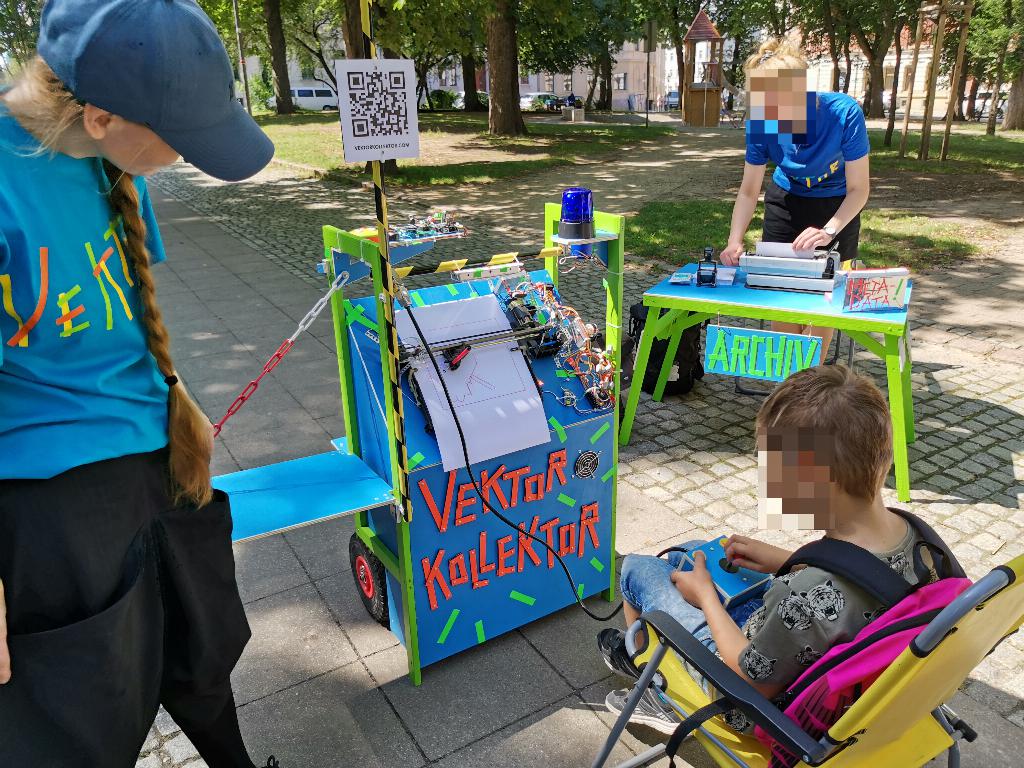
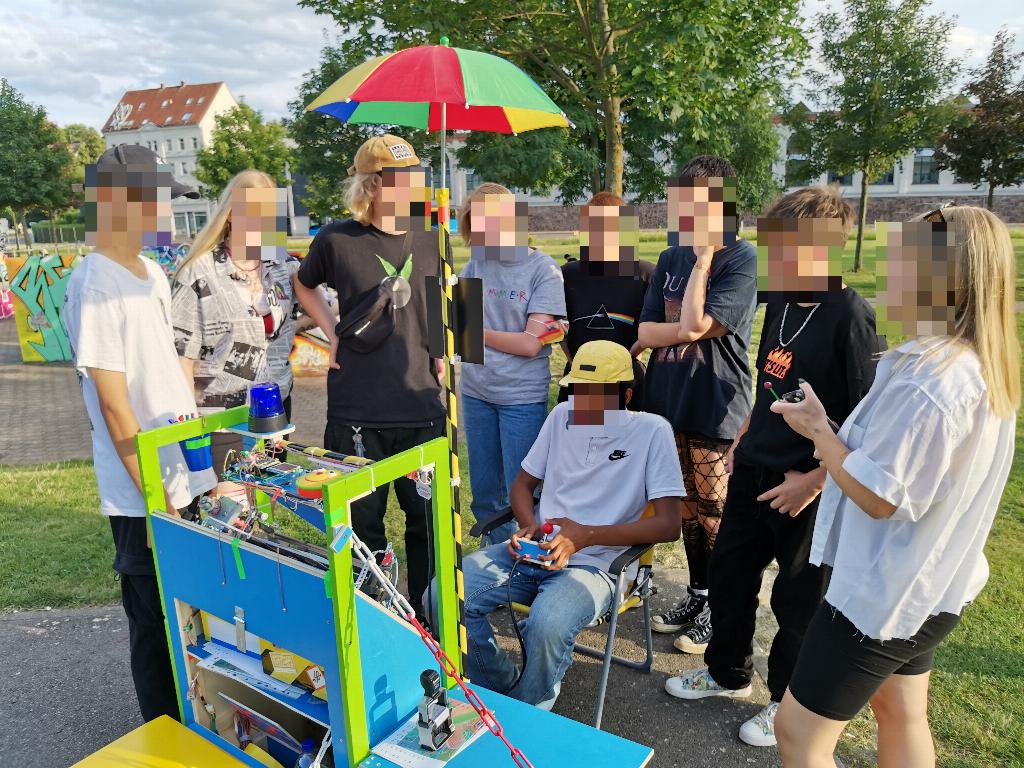
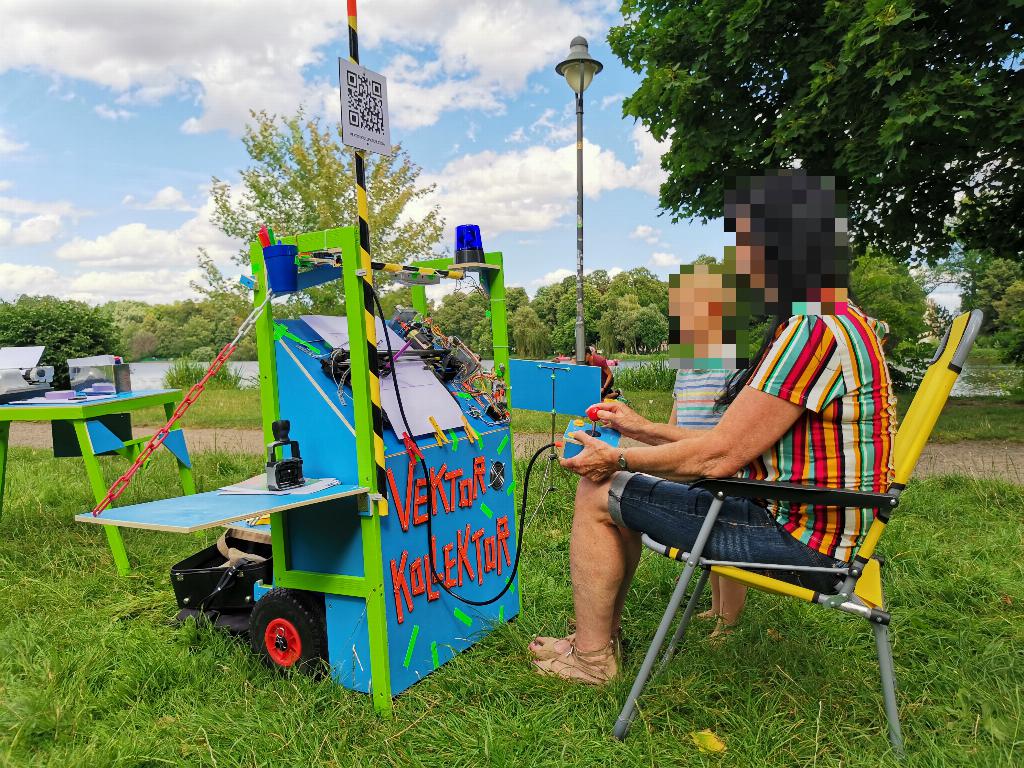
Kati and I made the VEKTORKOLLEKTOR during the Dialogfelder residency program by Klub Solitaer e.V. in Chemnitz. The program addresses urban space, digitization and participation, with the 2021 theme being “Drag & Drop”. Thus we dragged VEKTORKOLLEKTOR in the city and dropped it at different locations in order to digitize the creativity of the people in the form of vector drawings. Additionally, we asked people to give a title for their creation, and noted down this metadata with a Robotron typewriter, a piece of East German history, familiar to many locals.

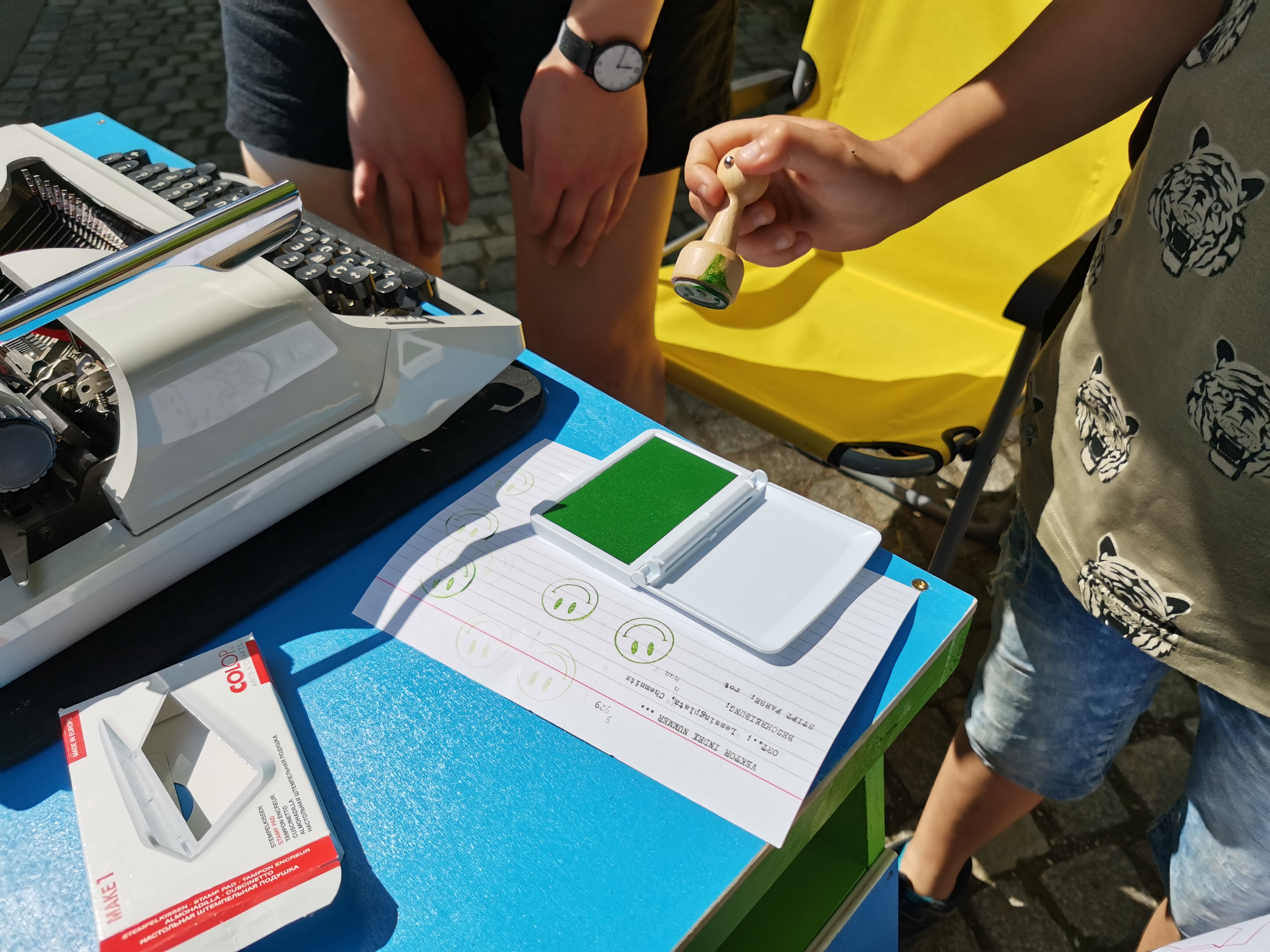
Title of the right one:
“Rain over Machu Picchu”

The open vector archive has already started to evolve in different directions. In Chemnitz we collaborated with Tortuga e.V. and Zietenaugust neighbourhood garden to paint some of the vectors on building walls with my big spray can plotter.

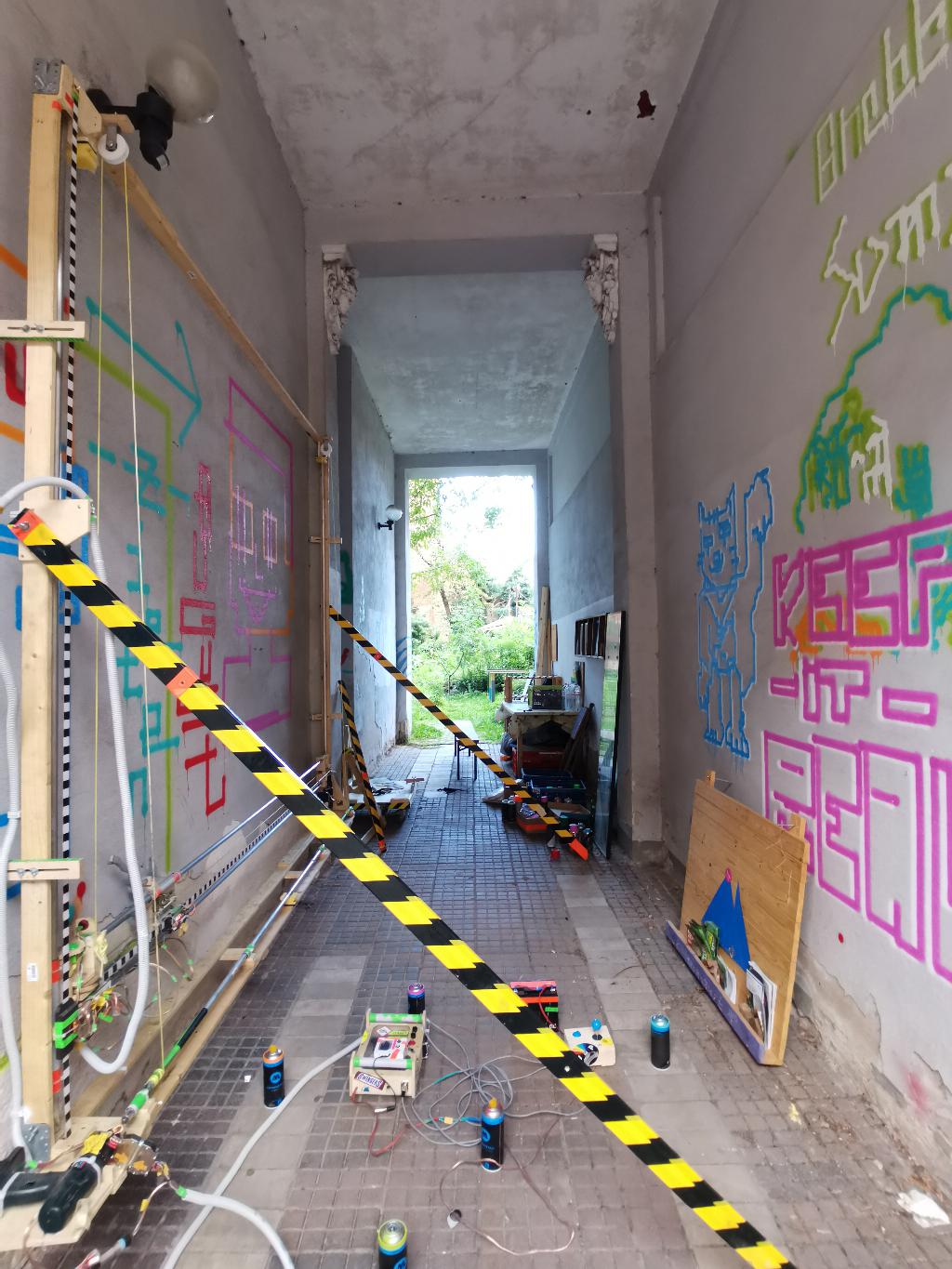
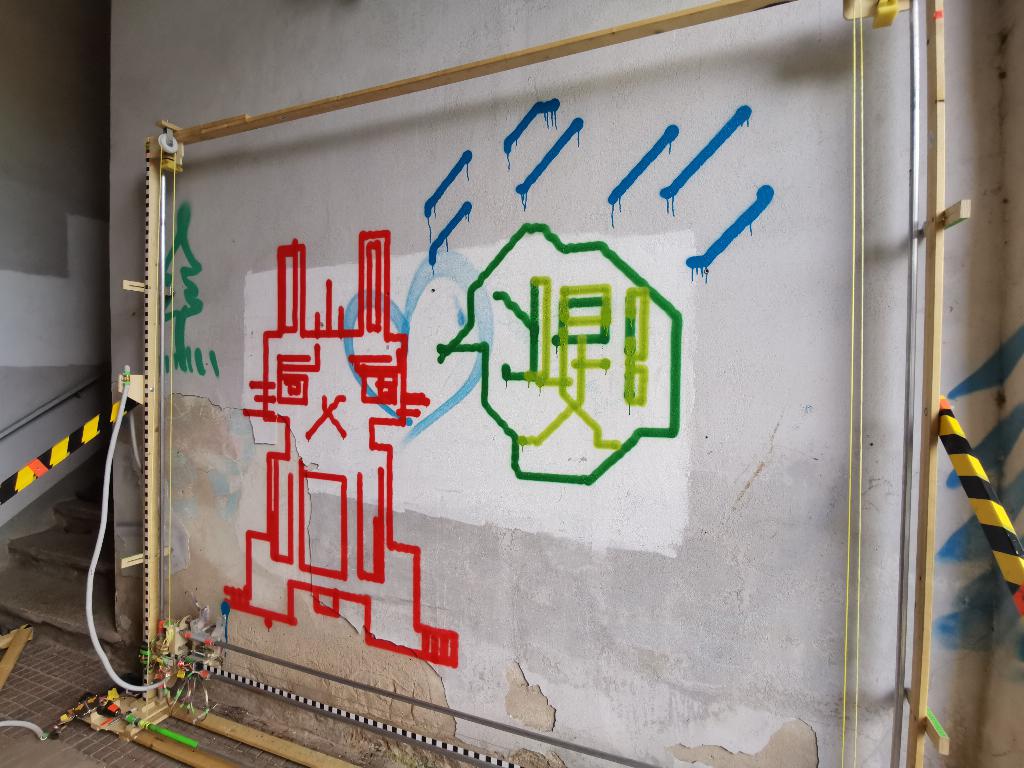
Meanwhile, Mario Voigt from the local FabLab created an extension for Inkscape for converting the vectors into Scalable Vector Graphics (SVGs). Ines Eisinger also made an artistic documentation of the vector collection. Lastly, we made enigmatic Vectorscope cards (in German) together with the locals. You can try them out at Späti to find out your magic sign based on your birth month, shoe size and number of drunken beverages.
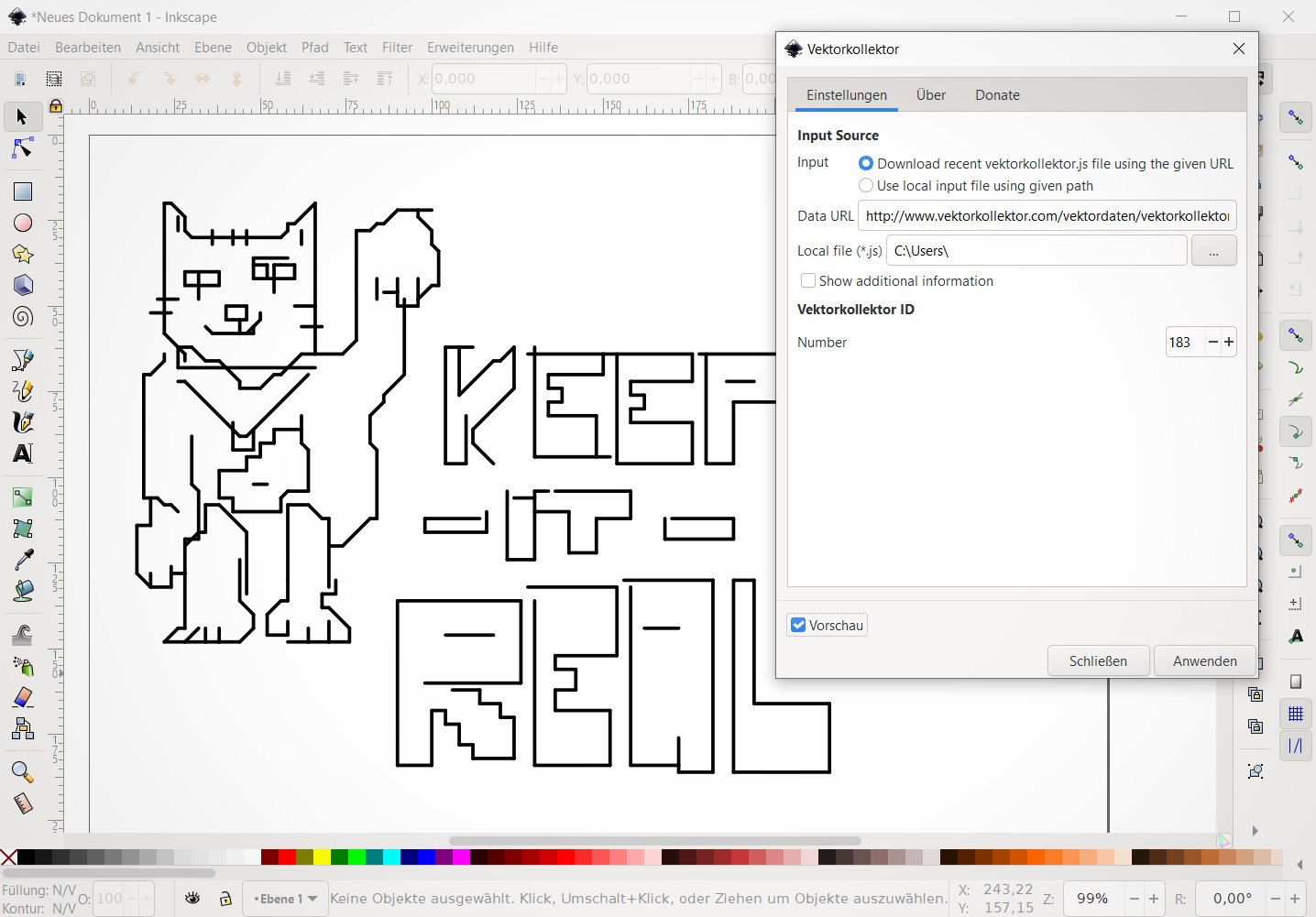

Technical details
The technical architecture of the installation was strongly driven by the peculiar selection of random electronic components that we brought with us to Chemnitz. Therefore, it is not necessarily advisable to rebuild the machine with the current set-up, but rather to come up with a more elegant solution. ;) Here is nevertheless an overview of the involved technology for those who are interested.

Our starting point was an HP7475A pen plotter from the 80s. Unfortunately this beautiful piece of machinery fried already while we were trying it out, possibly due to a power supply failure and a subsequent chain reaction. Thus we replaced the entire plotter electronics and only kept the mechanism. At the end, this quickfix proved to work quite well and it also gave the installation a nice DIY look.
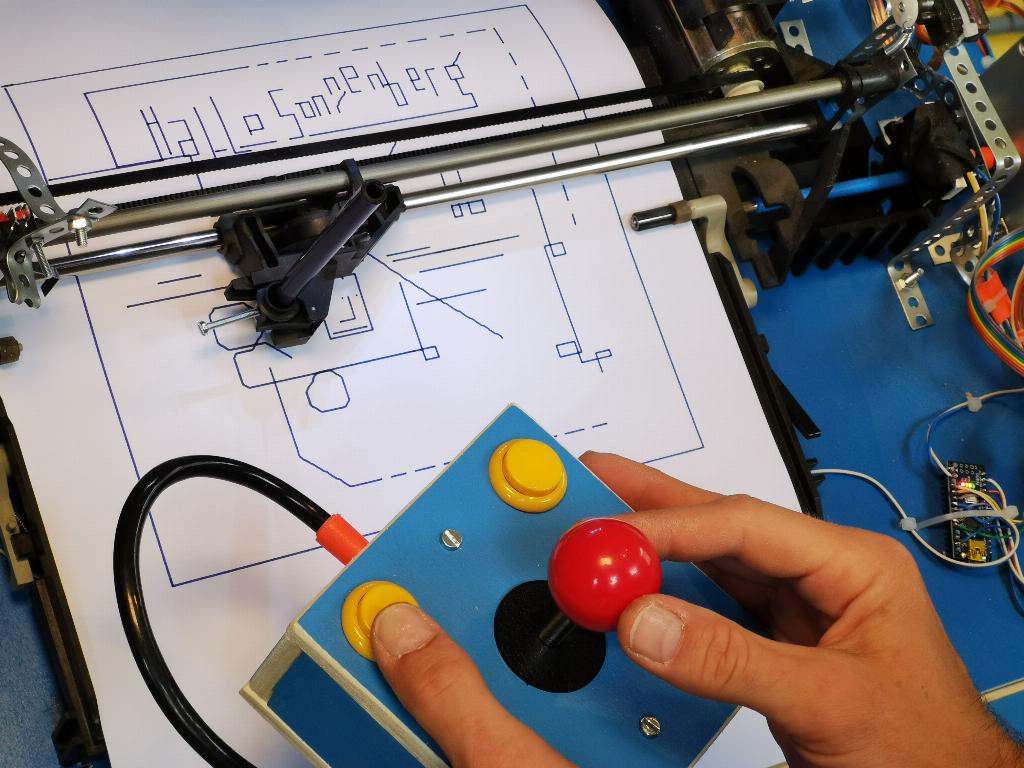
In the Vektorkollektor set-up an arcade joystick is connected to a main Arduino board (Arduino Nano), which communicates with a second Arduino (also Nano) that is controlling the plotter. The main Arduino also saves the coordinates of the vector drawings on an SD card and shows the drawing live on a small TFT display. The communication protocol and the physical pin connections are described in the Arduino source codes, which you can download here.
Uno/MP3 player on the left, the main controller with display and SD card slot in the middle, volume control and a big smiley start/stop button on the right side
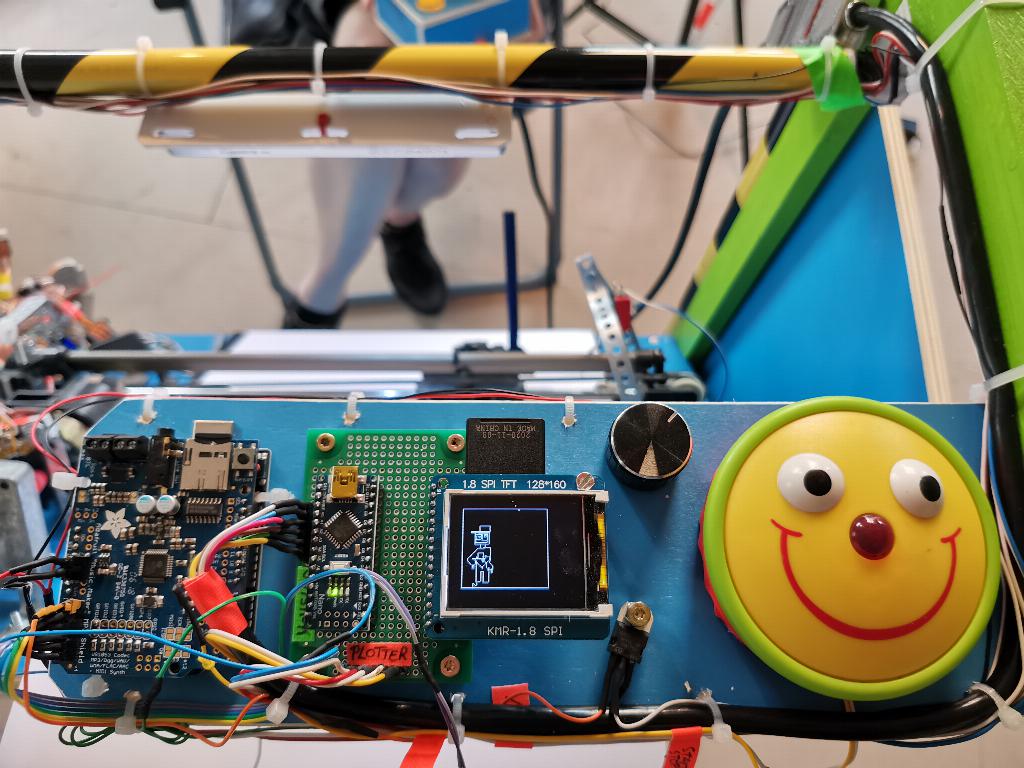
The second Arduino, which controls the plotter, reads the X- and Y-target positions from the main Arduino via UART. The directional commands are fed to two DC gear motors via a motor driver to move the pen and paper towards the desired destination. The motors are attached to the shafts of the existing mechanism using pneumatic plastic tubes. DIY optical encoders cut out of foam board are used to obtain positional feedback. The modified plotter is much slower and less precise than the original device, but good enough for our purposes. It also has one advantage for our mobile set-up: it can run on a 12V motorcycle battery.
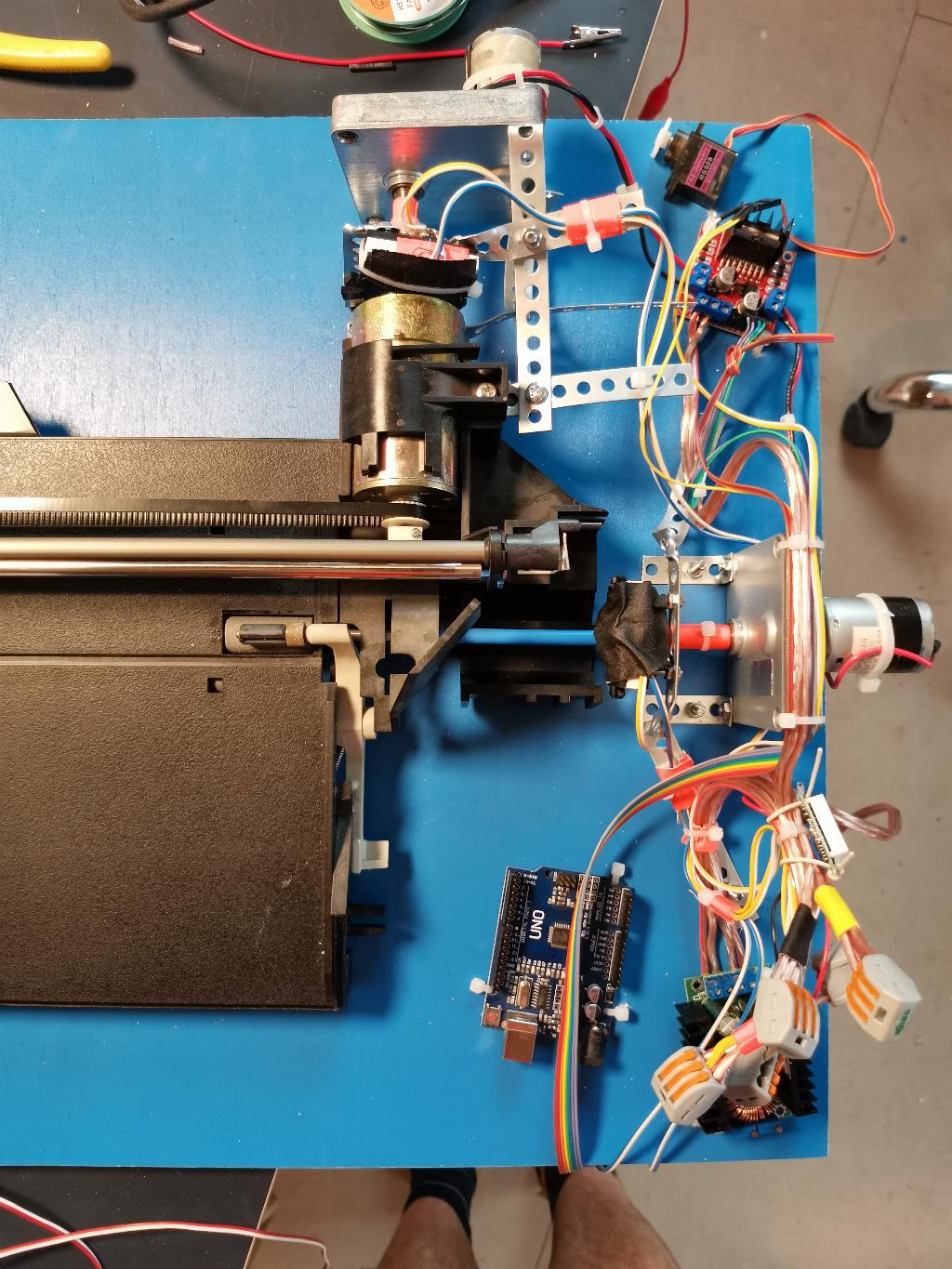

We also had an Adafruit Music Maker shield from an old project in our junk box. This brought up the idea to accompany the drawing experience with chiptune style music. Since three is a lucky number, we added a third Arduino board (Arduino Uno) with the shield to the set-up and used it as a simple MP3 player. But as mentioned in the beginning, perhaps you’ll come up with a more elegant solution and avoid the hassle of having three Arduinos talk with each other in case you want to build your own VEKTORKOLLEKTOR.

Thanks
We thank everyone involved for the great time in Chemnitz. Thank you Ulrike and Robert from Klub Solitaer e.V. for inviting us in the first place and xHain for donating the plotter. Thank you local colleagues and friends, Daniel, Katharina, Anna, Ines, Mario, Babette, Lisa, Octavio, Luca, Chaostreff Chemnitz and Jürgen. Warm thanks also to our wonderful, funny Dialogfelder co-artists Sendi, Jurij and Tom (BridA).
Additional resources
- Hires photo archive with making-of pictures and photos of the installation in use at various places. License: CC BY 3.0
- Video in high quality on archive.org
- Arduino Codes (plotter controller, main controller, MP3 player)
- Processing Code (PLT/CSV-text to JS/PDF converter, used to bring the data from SD card online)